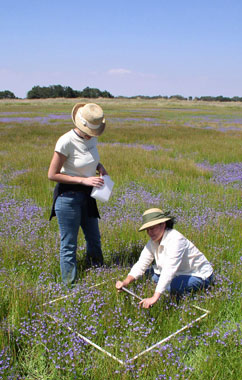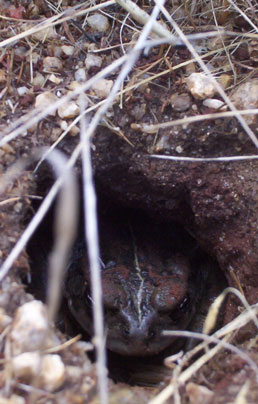

Structure and seasonal changes of nematode communities from vernal pools (Santa Rosa Plateau)
|
 |
Description
California's vernal pools provide habitats for a wide range of highly adapted organisms, including twenty-seven species of special concern listed by the U.S. Fish and Wildlife Service. Human activities have eliminated the large majority of pools occurring before in California, and the remaining ones are the subject of a dedicated Recovery Plan by the USFWS. One of the Recovery Tasks listed in this Recovery Plan, is to inventory each pool in terms of species diversity and abundance.
We are conducting an exploratory survey of nematodes in two pools from the Santa Rosa Plateau Ecological Reserve. This study not only constitutes the first survey of nematodes from vernal pools in the world, but also applies a novel combination of microscopy and molecular analysis. These methods will result in the construction of a database of diagnostic DNA sequences, as well as a library of "virtual nematodes" recorded with video microscopy at high magnification. Both resources will provide an essential baseline for future surveys of longer duration and expanded geographical scope. Because of the wide range of ecological requirements and behaviours exhibited by nematodes, our data are expected to reveal correlations with important environmental parameters. This may prove to be directly relevant to monitoring of the general effects of annual climate fluctuations, and bioassessment of the specific consequences of disturbances due to pollution or changes in land use on the Santa Rosa Plateau. Given the current lack of knowledge on nematodes from this habitat, we also expect to discover new species, as well as some species that will be useful as bioindicator organisms for specific changes or disturbances in vernal pools.
Source of supportDuration
Project teamLinks
|
 |
